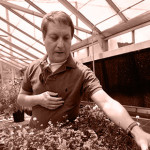
Glyphosate in Food
09/13/2017
How did a chemical weed killer get into breakfast cereal? Is this a health hazard?
We received a question from Rob: “Just saw a report on glyphosate contamination in popular foods. Results were expressed in ppb versus ppm. Should consumers be concerned with this report?”
The report found that foods such as Cheerios, Goldfish Crackers, Oreos and Doritos contain residues of the chemical glyphosate. Also known by the name Roundup, glyphosate is used to kill weeds in crops. Wayne Parrott, PhD, and William Vencill, PhD, professors in the Department of Crop and Soil Sciences College of Agricultural & Environmental Sciences at the University of Georgia, provided some insight.
One of the things we wanted to know was how glyphosate could get into these foods. Dr. Parrott explained that the chemical has been used in agriculture since the 1970s.
“They are giving the impression that foods are contaminated with glyphosate, and if the glyphosate was not there, the foods would be otherwise pure, which is false. They found glyphosate in foods because they looked for it. Had they looked for other herbicides used in agriculture, they would probably have found them too,” he said.
Now to the first part Rob’s question. The report stated that Cheerios contained 1,125.3 ppb (or parts per billion) of the chemical. What’s the difference between ppb and ppm?
Dr. Vencill and Dr. Parrott: “Residues in foods are normally measured in ppm (parts per million) with 1 ppm being equivalent to about 7,500 people out of all the people on earth. A ppb is a part per billion, which is a really small unit of measurement, equal to 7 or 8 people out of everyone on the planet.”
The thing Rob and all of us really want to know is if this level of contamination is something to cause concern. The experts said these levels are “way too low” to worry about. The EPA conducts extensive safety tests, which are used to set the maximum level of chemical residues that food can contain and still be safe.
“On top of that, the EPA sets a safety margin by setting allowable residues at 100 to 1,000 times lower than the level that is considered hazardous,” he said. View the EPA safety levels for glyphosate. All of the foods that were tested showed to be below the EPA safe levels.
We also asked why glyphosate herbicide is used so much in growing crops.
Dr. Vencill and Dr. Parrott: “Glyphosate continues to be widely used because few, if any other herbicides, are as safe, effective, and economical. By safe, I mean safer than table salt.”
Glyphosate shows up in many foods because it is used by farmers to raise food. The amount detected in foods is very small and well within the range determined to be safe by government agencies.
Originally published Dec. 9, 2016.



























